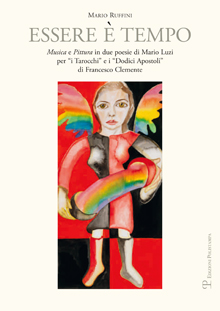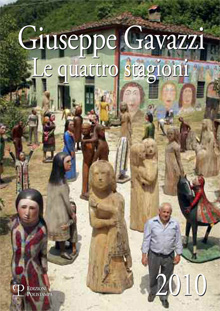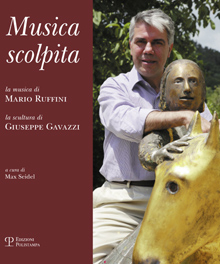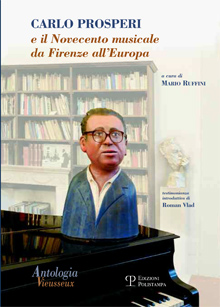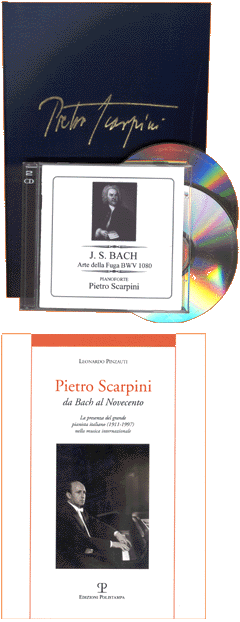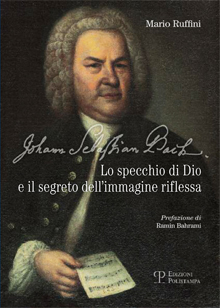
Dio scelse la musica per misurare il tempo, perché tempo essa stessa, e Johann Sebastian Bach ne divenne il suo più perfetto misuratore. Bach scelse la musica per parlare con Dio. Il dialogo fra loro avviene attraverso linguaggi cifrati e segreti che trovano nel numero 14 e nel nome B.A.C.H. il metodo per comunicare fra uomo e divinità. Il Kantor maximus dal rigore proverbiale, può apparire sorprendente: è infatti autore di opere di segno opposto, dalla estrema multipolarità creativa. Alcuni suoi lavori codificano procedure spietatamente rigorose, che rivelano il suo genio speculativo, geometrico e architettonico (Offerta musicale, Variazioni Goldberg, Canone enigmatico, L’Arte della fuga). Altri si caratterizzano per la massima libertà inventiva (Fantasia cromatica, Preludi del Clavicembalo ben temperato, Concerti). C’è poi il Bach liturgico (Cantate, Oratori, Passioni, Messe), a cui si contrappone il Bach profano (Cantate profane); c’è il Bach luterano dei Corali, e quello che dedica la Messa in Si minore al re cattolico Federico Augusto di Polonia. C’è il Bach vocale e quello strumentale, il Bach canonico e quello giocoso dei quodlibet: il Bach dei Preludi e Fughe del Clavicembalo ben temperato coniuga “anima et corpo” e unisce indissolubilmente libertà e rigore. Bach è l’una e l’altra cosa. C’è poi il Kantor seduttore, quello delle Suites, che si configurano come il vero parlamento danzante dell’Europa unita del Settecento. C’è infine il Bach segreto, che parla con l’Essere supremo attraverso simboli e numeri, e che sorprendentemente affida alle arti figurative il messaggio musicale contenuto nel Canone enigmatico. È un grande gioco di specchi: nei numeri segreti del princeps musicae c’è forse la prova dell’esistenza di Dio.
La storia bachiana attraversa anche le fasi di un altrettanto enigmatico rapporto con Georg Friedrich Händel, del quale utilizza un basso di ciaccona per comporre l’Aria celeberrima che dapprima è inserita nel Klavierbüchlein für Anna Magdalena (1722-25), poi apre le Variazioni Goldberg BWV 988 (1741-42), sono quindi alla base dei 14 Canoni BWV 1087 (1742-46), e infine compare nel cartiglio mostrato da Bach nel ritratto realizzato da Haussmann nel 1746.
Di ciò parla questo volume di teologia musicale bachiana, scientifico e narrativo, che presenta la proposta per una nuova attribuzione musicologica e si compone di 114 pagine, 14 capitoli, 14 box di approfondimenti tematici e che costa 14 euro.
I edizione: marzo 2012
I ristampa: aprile 2017
Formato PDF
God chose music to measure time because music is time, and Johann Sebastian Bach became its most perfect measurer. Bach chose music in order to speak with God. Their dialogue unfolds through coded language and secrets that find in the number 14 and in the name B.A.C.H. the method of communication between mankind and divinity. The Kantor maximus of proverbial rigour can be surprising: he is, in fact, the composer of diametrically opposed works, a composer with extreme compositional diversity. Some of his works codify ruthlessly rigorous procedures that reveal his speculative, geometric, and architectonic genius (Musical Offering, The Goldberg Variations, Enigma Canon, The Art of the Fugue). Other, instead, are characterized by absolute inventive freedom (Chromatic Fantasy, the Preludes for The Well-Tempered Clavier, the Concerts). And then there is the religious Bach (Cantatas, Oratorios, Passions, Masses), set against the secular Bach (Secular Cantatas). And then the Lutheran Bach of the Chorals, and the Bach who dedicates his Mass in B minor to the Catholic King of Poland, Fredrick Augustus. There is the vocal Bach and the instrumental one, the canonic Bach and the playful one of the Quodlibet. The Bach of the Preludes and Fugues from The Well-Tempered Clavier unites “soul and body” and joins freedom and rigour in an indissoluble bond. Bach is one and the other thing. And then there is the seductive Kantor, the one of the Suites, that turn out to be the true dancing parliament of eighteenth-century united Europe. Lastly, there is the secret Bach who speaks with the Supreme Being through symbols and numbers and who, surprisingly, entrusts the musical message of his Enigma Canon to the figurative arts. It’s a great play of mirrors: in the secret numbers of the princeps musicae there is, perhaps, the proof for the existence of God.
Bach’s history also runs through the phases of an equally enigmatic relationship with Georg Friedrich Händel, from whom he takes a chacone bass in order to compose the very famous Aria that will first be inserted into the Klavierbüchlein für Anna Magdalena (1722-1725), then used to open the Goldberg Variations BWV 988 (1741-1742), then re-used as the basis for the Fourteen Canons BWV 1087 (1742-1746), and finally written out in the music sheet held by Bach in the portrait by Haussman (1746).
These are the topics discussed in this volume of Bach’s musical theology; a scholarly and narrative volume that proposes a new musicological attribution. The work is 114 pages long, laid out in 14 chapters, and contains 14 “boxes” of thematic analyses.
1st edition: March 2012
1st reprint: April 2017
PDF format
Polistampa, 2012
Pagine: 114
Caratteristiche: ill. b/n, br.
Formato: 15x21
ISBN: 978-88-596-1061-8
Settori:
Vedi:
